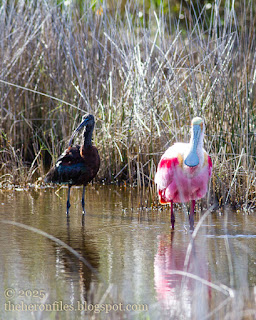This week my wife and I joined a guide from The Nature Conservancy along with a few employees and other volunteers for a paddle through Cumberland Marsh in Eastern Virginia. We learned a lot about the restoration work TNC has done here including the removal of two dams. This site also has strong populations of a couple of endangered plants including sensitive joint-vetch.
 |
| Cumberland Marsh launch site |
We drove back to a limited-access part of the preserve to launch and had about a 4 mile loop trip.
 |
| The marsh during a snack break |
There were nice views of a pair of northern harriers, a close fly-by from a bald eagle, and several belted kingfishers along the way. The marsh, especially near the start, had several hundred, if not thousands, of red-winged blackbirds and grackles flying around.
 |
| Bidens in bloom |
We also encountered some wild rice which the indigenous people harvest.
 |
| Wild rice is the tall, thin stuff in the front left |
And the chatting with all of the very interesting people was the real highlight. We have been on several such trips at various locations and with various groups. Everyone on this trip was interesting to talk with and came from different backgrounds. Not something you find on every paddle.
 |
| A few of our companions |
It was a great time and I'm looking forward to meeting some of our companions again on future adventures and volunteer activities.































